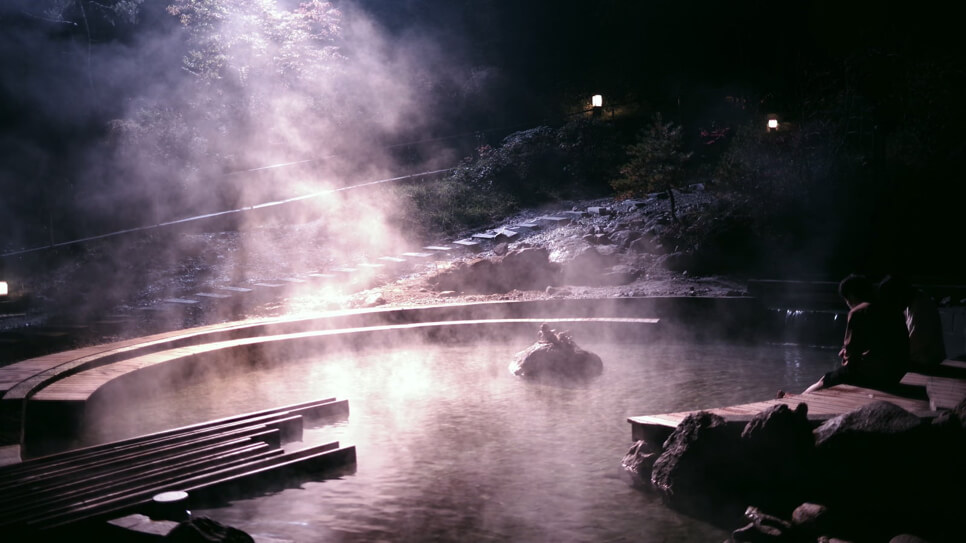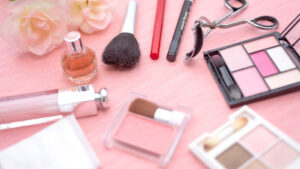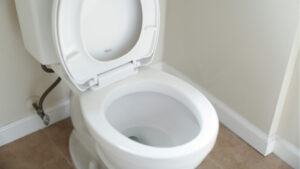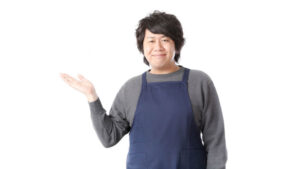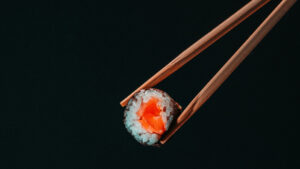Japanese onsen are more than just a bath.
They are a healing experience shaped by natural hot spring water flowing from deep within the earth, and by a culture that values tranquility and respect.
For first-time visitors, the many rules and customs might seem confusing. You may wonder, “Do I need to bring anything?” or “Am I doing this right?”
This article provides a complete guide—from basic onsen knowledge, etiquette, and essential items to how to fully enjoy your visit, including recommended hot spring spots near Tokyo.
Whether you’re a beginner or looking to deepen your experience, this guide will help you enjoy Japan’s onsen culture more comfortably and confidently.
Contents
Understanding the Basics of Japanese Onsen: A Beginner-Friendly Introduction
Onsen, or hot springs, are one of Japan’s most beloved forms of relaxation. While they are a popular activity for both locals and travelers, first-time visitors may feel unsure about the rules, types of onsen, or what to expect.
In this section, we’ll walk you through the essential knowledge you need to enjoy Japanese onsen with confidence—even if it’s your very first time.
What Is an Onsen? Types and Health Benefits
An onsen is naturally heated water that rises from underground with a certain temperature and mineral content, officially defined by Japanese law.
There are many types of onsen, and each variety offers unique health benefits depending on its mineral composition. Unlike ordinary baths, onsen are rich in nature’s therapeutic elements.
The Difference Between Natural and Artificial Onsen
There are two main types of onsen in Japan: natural onsen and artificial onsen.
Natural onsen use water that rises naturally from underground due to geothermal heat and pressure. This water is packed with natural minerals and nutrients.
Artificial onsen, on the other hand, are created by heating regular water and adding mineral components to mimic natural spring water.
Both types offer relaxing experiences, but for a truly authentic hot spring journey, natural onsen are highly recommended.
Types of Onsen Water and Their Benefits (Simple, Sulfur, Carbonated, etc.)
There are over ten officially recognized types of onsen water throughout Japan, each with its own unique properties and health benefits. Here are some of the most common and popular types:
- Simple spring (Tanjun-sen): Gentle on the skin with low mineral content. Ideal for children, the elderly, and onsen beginners. Known for its relaxing effect.
- Sulfur spring (Iō-sen): Characterized by its distinct odor. Offers antibacterial properties and is believed to be effective for skin conditions and joint pain.
- Carbonated spring (Tansan-sen): Contains dissolved carbon dioxide, which helps improve blood circulation and relieves fatigue. Often found at a lukewarm temperature, making it ideal for longer soaks.
Each spring type provides different effects, so choosing an onsen based on your wellness goals—whether for stress relief, skin care, or physical recovery—can add another layer of enjoyment to your experience.
Health and Beauty Benefits of Onsen
Onsen bathing offers more than just relaxation—it can also bring a range of health and beauty benefits.
For example, soaking in carbonated springs may improve blood circulation, making them effective against cold hands and feet or shoulder stiffness. Sulfur or acidic springs are believed to support healthy skin by promoting turnover, potentially contributing to a clearer, smoother complexion.
Inhaling the steam from the hot water can also have positive effects on the respiratory system.
Ultimately, Japanese onsen can soothe both body and mind, helping you recover from everyday fatigue and feel revitalized from the inside out.
Day-Use vs. Overnight Onsen: Which Style Suits You Best?
There are two main ways to enjoy Japanese hot springs: day-use onsen and overnight stays. Each offers its own charm and convenience, and the best choice depends on your travel schedule and personal preferences.
In this section, we’ll take a closer look at the differences and benefits of each onsen experience.
Benefits and Enjoyment of Day-Use Onsen
Day-use onsen are perfect for those who are short on time or looking for a casual, affordable way to relax in a hot spring.
Key advantages include:
- Quick refresh: Even a short visit provides soothing relaxation during a busy day.
- Cost-effective: Since you’re only paying for admission, it’s a budget-friendly option.
- Variety of choices: From modern urban-style bathhouses to traditional countryside resorts, day-use onsen facilities are widely available.
Day trips that combine onsen with sightseeing or driving tours are especially popular. Many facilities offer packages that include lunch or massage services, allowing for a more fulfilling and relaxing experience.
The Charm of Staying at a Traditional Ryokan
Staying overnight at an onsen ryokan—a traditional Japanese inn—offers a complete, immersive experience of Japanese hospitality and relaxation.
What makes overnight stays special:
- Multiple bath opportunities: Enjoy soaking after check-in, before bed, and again in the early morning—an indulgence unique to overnight guests.
- Seasonal local cuisine: Ryokan dinners often feature beautifully presented kaiseki meals made with regional ingredients.
- Tranquil and private atmosphere: Unwind in a peaceful tatami room or enjoy the luxury of a private open-air bath.
If you’re looking to step away from everyday life and enjoy deep, restful relaxation, staying overnight at an onsen ryokan is the ideal choice.
Tips and Things to Consider When Choosing an Onsen
To get the most out of your onsen experience, it’s important to choose the right location and style based on your needs. Here are some helpful points to consider:
Key factors to keep in mind:
- Clarify your purpose: Looking for smooth skin? Choose a spring with beneficial minerals. Traveling with family? Check for private or family baths.
- Ease of access: Consider whether the facility is reachable by train or car, especially if traveling from a major city.
- Crowd level and reviews: If you prefer a quieter atmosphere, opt for weekdays or lesser-known hot springs. Online reviews can offer useful insights.
- Facilities: Check for extras like open-air baths, saunas, or well-stocked amenities to enhance your stay.
Important cautions:
- Check tattoo policies: Many traditional onsen do not allow guests with tattoos. Always confirm ahead of time if you have visible body art.
- Day-use time limits: Be aware that some facilities have limited hours for non-overnight guests. Make sure to plan accordingly.
By understanding the different types and styles of onsen, you’ll be able to find the one that perfectly matches your travel goals and preferences.
What to Bring to an Onsen: Essentials and Extras
To fully enjoy your visit, especially to a day-use onsen, preparation is key. This section breaks down what you should bring into three categories: must-haves, helpful extras, and items to avoid.
Essential Items to Bring to an Onsen
Before heading to an onsen, make sure you have the following basic items packed. These essentials will ensure a smooth and comfortable experience:
- Face towel: A small, quick-drying towel for washing and use in the bathing area. Handy and easy to carry.
- Bath towel: A large towel to dry off after bathing. Some day-use onsen charge rental fees, so bringing your own is recommended.
- Change of clothes: Wearing damp underwear or sweaty clothes can feel unpleasant. Don’t forget a clean pair of socks too!
- Coins or cash: You may need these for coin lockers or vending machines. Many onsen still don’t accept credit cards or digital payments.
- Plastic bag: Useful for storing wet towels or clothes after bathing.
These are considered the standard gear for any onsen visit. Don’t forget to pack them in advance.
Nice-to-Have Extras for Extra Comfort
Want to elevate your onsen experience? These optional items can help you feel even more relaxed and refreshed:
- Skincare items (lotion, moisturizer, etc.): Onsen water can dry out your skin, so it’s good to rehydrate with your own products after bathing.
- Hairbrush or comb: For grooming and comfort after your bath.
- Hair ties or headbands: A must for those with long hair to keep it out of the water.
- Drinks for hydration: Hot spring bathing can be dehydrating. Bring water or a sports drink to stay refreshed.
- Comfortable clothes: If no yukata (lounge wear) is provided, relaxed clothing is useful for meals or resting between baths, especially at day-use facilities.
These aren’t must-haves, but if you have space in your bag, they’ll definitely improve your overall comfort.
Prohibited Items: What Not to Bring to an Onsen
To maintain cleanliness and respect for other guests, most onsen facilities prohibit certain items. Here’s what to avoid:
- Soap or shampoo (sealed/unopened): Most facilities provide these. If you prefer your own, check the rules first.
- Food and drinks: Some facilities allow drinks in designated areas, but eating or drinking in the bathing area is strictly forbidden.
- Cameras or smartphones: Photography is generally prohibited in bathing areas to protect guests’ privacy.
- Pets: Except for service animals like guide dogs, pets are not allowed.
- Large floatation devices or toys: Onsen are places for quiet relaxation, not play. Be mindful of the atmosphere and avoid bringing pool gear.
Each facility may have different rules, so it’s best to check the official website or signage in advance if you’re unsure.
Onsen Etiquette and Rules You Should Know
Japanese hot springs are not only places for physical and mental relaxation—they also come with their own unique set of customs and etiquette. These rules are important for maintaining hygiene and ensuring a pleasant experience for all guests.
If you’re visiting an onsen for the first time, understanding these basic manners in advance will help you enjoy your experience with confidence and respect.
Before You Bathe: Preparation and Important Reminders
Before entering the hot spring, there are several essential steps you must follow. Skipping these can make others uncomfortable or even violate the facility’s rules.
The three points below represent the most fundamental onsen etiquette.
Wash Your Body Before Entering the Bath
Before soaking in the communal bath, you must wash your body thoroughly. This starts with a practice called “kakeyu”, where you pour hot spring water over yourself using a small bucket or scoop. It helps your body adjust to the water temperature and rinses off surface dirt.
After kakeyu, head to the shower area and wash your entire body with soap and shampoo. Most onsen provide stools, hand-held showers, and toiletries at each washing station.
This step is essential for keeping the shared bathwater clean. Entering the tub while sweaty or dirty—especially after a day of sightseeing or physical activity—is considered impolite. Taking time to wash thoroughly shows respect for others and for the onsen culture itself.
Do Not Put Your Towel in the Bath
In Japanese onsen, it is considered improper to put your towel—especially your face towel—into the bathwater. This rule exists for hygiene reasons and is part of traditional onsen etiquette.
Keep your small towel out of the water by placing it on your head or leaving it on the edge of the bath. To avoid accidentally dropping it in, try folding it neatly and holding it securely while you soak.
Additionally, wrapping a large bath towel around your body while entering the bath is usually discouraged. However, some mixed-gender (konyoku) or tattoo-friendly facilities may allow towel bathing—always check the rules in advance.
Tie Up Long Hair to Keep It Out of the Water
If you have long hair, it is good manners to tie it up before entering the bath. Letting your hair float in the water is considered unsanitary and can make others uncomfortable.
Use a hair tie or scrunchie to secure your hair in a bun or ponytail. Some facilities even offer shower caps or hair bands for guests.
When drying your hair after bathing, be mindful of shared spaces. Use hairdryers in designated areas, and be considerate of others waiting to use them.
How to Behave in the Bath: Onsen Etiquette in the Tub
An onsen is a quiet and peaceful space meant for relaxing both body and mind. Other guests visit to unwind as well, so it’s important to be mindful of your behavior in the shared bath. Even small acts of courtesy can greatly enhance everyone’s experience.
Here are some key points to help you enjoy your onsen time comfortably and respectfully.
Enter Quietly and Keep Your Voice Down
When entering the bath, do so gently and quietly. Avoid splashing water or making loud noises, as these can disturb others who are trying to relax.
If you are visiting with friends or family, keep conversations soft and discreet. Remember that the onsen is a public space, and maintaining a calm atmosphere is part of the cultural respect expected in Japan.
No Swimming or Jumping
An onsen is not a swimming pool. Swimming, diving, or splashing in the bath is strictly prohibited. If you are with children, ensure they are supervised and understand how to behave calmly in the water.
Activities such as throwing water or making exaggerated movements can make others uncomfortable. Think of the onsen as a place to soak quietly and peacefully.
Smartphone and Camera Etiquette
Using smartphones or cameras inside the bathing area is generally not allowed. This is to protect everyone’s privacy, as taking photos could accidentally capture others in the background.
Even if you want to take pictures for social media, never photograph in the bath or changing area. Use only designated photo zones, such as the lobby or relaxation lounge, if permitted.
Also, playing music or videos on waterproof devices while in the bath is considered disrespectful.
Follow the golden rule: “Leave the pictures to your memory.” That’s how you can fully appreciate the tranquil atmosphere of Japanese onsen culture.
Important Tips for Foreign Visitors
Japanese onsen are one of the most unique and appealing cultural experiences for international travelers. However, many customs and unspoken rules may be unfamiliar to first-time visitors. Understanding these key points beforehand will help you avoid misunderstandings and enjoy your onsen visit with confidence. Here are three essential aspects to keep in mind.
Rules and Solutions for Tattoos
In Japan, tattoos are often associated with organized crime (yakuza), and many traditional onsen facilities have strict no-tattoo policies due to cultural perceptions and customer comfort.
To enjoy your onsen visit without trouble, consider the following options:
- Look for tattoo-friendly facilities: Some onsen, especially those catering to international visitors, openly welcome guests with tattoos. Check their policies in advance.
- Use tattoo cover stickers or wear a rash guard: Small tattoos can often be covered with waterproof patches, which may be accepted by some facilities.
- Reserve a private bath: Renting a “kashikiri” (private or family bath) allows you to enjoy the onsen in a private setting, without worrying about being seen.
With the growing number of inbound travelers, more onsen are becoming flexible about tattoos. Still, it’s important to confirm the rules in advance, either through the facility’s website or by contacting them directly.
Be Aware of Gender-Specific Bathing Areas
Most Japanese onsen operate with separate bathing areas for men and women. These areas are clearly marked with signs or fabric curtains—often labeled as “男湯” (men’s bath) and “女湯” (women’s bath).
Common identifiers and helpful tips:
- Blue curtains usually indicate the men’s section (男湯 / otokoyu), while red or pink curtains mark the women’s section (女湯 / onnayu).
- Even if traveling with children, those of elementary school age or older are typically expected to use the bath corresponding to their gender.
- Mixed-gender baths are extremely rare, and when available, the use of swimwear or special garments is usually mandatory.
If you’re unsure, don’t hesitate to ask the staff for guidance or choose an onsen with English signage for a stress-free experience.
Understanding and Embracing Cultural Differences
Japanese onsen culture places a strong emphasis on quietness, respect, and consideration for others in shared spaces. These customs may differ significantly from spa or sauna experiences in other countries.
Key cultural expectations include:
- Nudity is the norm: Bathing in swimsuits or underwear is generally not allowed, except in special cases like mixed-gender facilities with rules permitting it.
- Keep conversations quiet: Speaking in hushed tones or remaining silent helps maintain a peaceful atmosphere.
- Don’t treat the bath like a pool: Onsen are places of healing and relaxation, not for splashing or playing.
By understanding and respecting these cultural values, you’ll not only avoid unintentional offenses but also gain a deeper appreciation for the onsen as a space rooted in Japanese mindfulness and tranquility.
Tips and Advice to Fully Enjoy Japanese Onsen
Simply soaking in an onsen is wonderful—but with just a few thoughtful steps, you can enhance both your relaxation and the health benefits.
This section offers practical tips to help you make the most of your onsen experience, both physically and mentally.
How to Bathe and Time Your Soak Effectively
In addition to general etiquette, onsen bathing has a natural flow that allows you to enjoy it more safely and comfortably.
Jumping straight into hot water can put strain on your body, so following the proper steps and pacing yourself is key to a healthy soak.
Warm Up Your Body with “Kakeyu” (Pouring Water)
Even if you’re not washing your entire body before entering the bath, this step is essential for both etiquette and health.
Key Points:
- Use a ladle or small bucket to pour warm onsen water over your body, starting from the feet and working upward.
- Follow the order from body parts furthest from the heart: feet → arms → shoulders → chest for a gradual temperature adjustment.
- This step is especially important in winter or after coming in from the cold, helping prevent shock from sudden heat exposure.
By taking time to pre-warm your body through this “pre-heating” process, you’ll enjoy a deeper and more effective sense of relaxation once you enter the bath.
The Secret is to Bathe in Several Short Sessions
Rather than soaking for a long time in a single session, it’s better to enjoy several short dips. This reduces strain on your body and allows you to absorb the benefits of the onsen gradually.
Basic Bathing Cycle:
- Kakeyu (pouring water to warm the body) → First soak (5–10 minutes)
- Short break
- Second soak (5–8 minutes)
- Optional third soak if desired
By repeating the cycle of “soak → rest → soak”, you can maximize the warming and circulation-boosting effects.
Also, for beginners or those with sensitive skin, shorter bathing times are especially recommended, as certain mineral-rich spring waters may be strong on the skin.
Tips to Prevent Overheating (Nobose)
One common issue in onsen bathing is “nobose”—a flushed, dizzy feeling caused by overheating.
To enjoy your bath safely and comfortably, keep these strategies in mind:
How to Prevent Overheating:
- Try half-body bathing: Soak only up to your upper abdomen to reduce strain on the heart.
- Stay hydrated: Drink room-temperature water or a sports drink before, after, or between soaks.
- Take frequent breaks: Cool down in the dressing or lounge area between baths.
Listen to your body and don’t push yourself. Staying mindful of your physical condition is the key to enjoying onsen safely and pleasantly.
Enjoying Onsen with Extra Activities
A hot spring trip isn’t just about bathing—there are many additional experiences that make your visit more enriching.
From local gourmet cuisine and relaxing massages to exploring the charming streets of onsen towns, these “plus α” elements enhance your journey and allow you to enjoy the hot spring experience with all five senses.
Savor Local Cuisine with a Meal-Inclusive Plan
One of the great pleasures of visiting an onsen is the food. Many ryokan and hotels offer meal-inclusive plans featuring seasonal dishes made with regional specialties.
Recommended Highlights:
- Traditional multi-course meals (kaiseki) showcasing local seafood and mountain produce
- Famous local dishes (e.g., yuba cuisine in Hakone, alfonsino in Izu, Joshu beef in Gunma)
- Authentic Japanese breakfasts or buffet-style morning meals
Food is often one of the most memorable parts of a trip.
With a stay-included plan, you can often enjoy dinner and breakfast in your room or a private dining space, making the experience even more special.
Enhance Relaxation with Massage & Wellness Treatments
Massages and wellness treatments are perfect for amplifying the relaxation effects of an onsen.
After soaking, your body is warm and your muscles relaxed—making massages more effective.
Popular Relaxation Options:
- Full-body shiatsu massage
- Foot reflexology
- Aromatherapy oil treatments
- Head spa and facial esthetics
Some facilities also offer stone saunas, steam rooms, and oxygen capsules—creating a full wellness course alongside your onsen experience.
These options are especially popular with women and couples.
Strolling Through Traditional Onsen Towns
Many hot spring areas are home to charming old-fashioned towns rich in history and atmosphere.
Strolling through these streets in a yukata is a unique delight of any onsen trip.
Ways to Enjoy:
- Browsing local souvenir and confectionery shops
- Trying foot baths and hand baths along the way
- Exploring photogenic spots like shrines, cobblestone paths, and traditional buildings
You might also encounter nighttime illuminations, morning markets, or local festivals—making the entire onsen town a destination in itself.
Leisurely walking after a bath will help you refresh both body and mind.
How to Choose an Onsen for Families or Couples
Onsen trips are not just for solo travelers—they’re also a beloved travel style for families and couples.
However, comfort can vary greatly depending on the facility, especially for those traveling with small children or couples seeking privacy.
This section offers tips on choosing the right onsen based on your travel style.
Look for Private or Family Baths
If you’re traveling with family or as a couple, choosing a facility with private or family baths is highly recommended.
These allow you to enjoy the onsen in a space all to yourselves—no need to worry about others watching.
Benefits of Private Baths:
- Ideal for families with small children who need extra care
- A rare opportunity for couples to bathe together
- Great for elderly guests or those needing assistance
Many places now offer rooms with open-air baths, allowing you to enjoy a luxurious soak during your stay.
If privacy is a priority, be sure to check in advance whether private baths are available and how to reserve them.
Facilities That Are Barrier-Free and Family-Friendly
When traveling with family, it’s important to choose an onsen facility with thoughtful accommodations and services.
Key Points to Check:
- Barrier-free rooms and baths (slopes, handrails, wheelchair access)
- Children’s amenities like yukata, slippers, and meal options
- Availability of baby baths, baby chairs, and diaper-changing areas
- Spaces for kids to play, such as playrooms or picture book corners
You can also look for labels like “family-friendly” or “child-friendly” on official websites and booking platforms.
Choosing a facility that welcomes all ages will help ensure a relaxing experience for everyone.
Tips for Choosing Stylish Onsen Inns for Couples
When planning a romantic onsen trip as a couple, selecting a lodging that offers a special ambiance and sense of escape is key.
Recommended Features:
- Stylish and thoughtfully designed rooms (e.g., modern-Japanese interiors)
- Rooms with open-air baths or panoramic views, perfect for enjoying the night scenery
- Couple plans that include special perks like cake or sparkling wine
- Chic loungewear and high-quality amenities provided by the inn
Some accommodations also offer anniversary packages or support for surprise celebrations—ideal for creating memorable moments together.
Be sure to check reviews and social media posts to find a place that fits your personal style and vibe.
3 Recommended Onsen Destinations for Day Trips
These onsen spots are perfect for day trips, each located just 1 to 2 hours from central Tokyo by train or car.
They offer both excellent accessibility and authentic hot spring experiences—ideal for a short but rejuvenating getaway.
Hakone Onsen (Kanagawa Prefecture)
Hakone Onsen is one of the most popular hot spring destinations, just about 90 minutes by train from Tokyo.
Known for its history as a therapeutic retreat, Hakone now boasts a wide variety of day-use onsen facilities, ryokan, and sightseeing attractions.
- A wide range of spring qualities (simple thermal springs, sulfate springs, chloride springs), gentle on the skin and excellent for heat retention
- Plenty of scenic open-air baths and private baths
- Can be combined with visits to Lake Ashi, Hakone Shrine, and local art museums
Hakone offers the perfect balance of relaxation and sightseeing in a single day trip.
Yugawara Onsen (Kanagawa Prefecture)
Located at the western edge of Kanagawa Prefecture, Yugawara Onsen is a serene hot spring area that has long been loved by writers and artists.
It’s about 70 minutes by Shinkansen from Tokyo Station, making it a relaxing yet feasible day trip.
- Authentic hot springs set in tranquil natural surroundings
- Perfectly pairs with forest walks and foot bath spots
- Many small, hidden day-use onsen facilities available
Ideal for those seeking a peaceful onsen experience away from the crowds.
Okutama Onsen (Tokyo)
Surrounded by lush mountains and clear rivers, Okutama Onsen is a nature-rich hot spring area located within Tokyo.
It’s about two hours from central Tokyo by train and is popular among hikers who enjoy combining trekking with a relaxing bath.
- Scenic open-air baths along the Tama River
- Affordable day-use facilities like “Moegi-no-Yu”
- Beautiful seasonal views—fresh greenery in spring, vivid foliage in autumn
Okutama offers an extraordinary escape into nature while still within the Tokyo metropolitan area.
Recommended Onsen Ryokan for an Overnight Stay
For those who want more than just a day trip soak, staying overnight at an onsen ryokan offers a truly relaxing experience—surrounded by quiet nature, stunning views, exquisite cuisine, and exceptional hospitality. Here are three popular onsen areas near Tokyo ideal for a luxurious overnight stay.
Gora Onsen – High-End Ryokan Retreats
Gora Onsen is perfect for travelers seeking a serene and upscale atmosphere. This area is known for elegant ryokan that cater to adult guests looking for a refined experience.
- Rich variety of spring qualities and open-air baths set in nature
- Many high-class ryokan with private hot spring baths in every room
- Exquisite kaiseki meals served in-room with views of seasonal landscapes
Ideal for anniversaries, romantic getaways, or special trips with parents—Gora is a top choice for a “memorable one-night” experience.
Atami Onsen – Ocean View Escapes
Just 40 minutes from Tokyo by Shinkansen, Atami Onsen is loved for its stunning ocean views. For a truly rejuvenating stay, choose a ryokan with sea-facing rooms or open-air baths.
- Scenic open-air or private baths with panoramic views of the sea
- Unforgettable bathing experiences at sunrise or sunset
- Fresh seafood-based meals highlighting local delicacies
Enjoy a harmonious blend of resort-like openness and traditional Japanese atmosphere in this coastal onsen paradise.
Ikaho Onsen – Retro Ryokan Charm
Located in Gunma Prefecture, Ikaho Onsen is famous for its nostalgic townscape, steam-filled streets, and stone stairways. Stay at a retro-style ryokan to immerse yourself in the essence of Japan’s classic onsen culture.
- Historic wooden inns and Showa-era retro ryokan
- Relax in the famous “Kogane-no-Yu” (golden brown sulfate spring)
- Plenty to explore nearby, including stone steps, foot bath cafés, and shrines
Perfect for those seeking a unique and nostalgic onsen trip that captures the spirit of old Japan.
Popular Onsen Facilities Among International Travelers
With more international visitors becoming interested in Japanese onsen culture, many facilities are enhancing their multilingual services and traveler-friendly amenities. Here are two highly recommended urban-style onsen experiences in the Tokyo and Yokohama areas—perfect for combining sightseeing with relaxation.
Ofuro no Osama (Tokyo)
“Ofuro no Osama” is a popular large-scale public bathhouse chain with multiple locations in the Kanto region. The Oimachi branch in Tokyo is especially favored by foreign tourists.
- Wide variety of baths including natural hot springs, carbonated baths, jet baths, and reclining baths
- Saunas and stone spas available for full-day enjoyment
- Rental towels and loungewear available, so you can visit empty-handed
Its convenient location just minutes from Oimachi Station makes it a great option for hotel guests or travelers with limited time during transit.
Manyo Club Yokohama Minatomirai
Manyo Club offers an authentic hot spring experience in a modern, high-rise spa facility right in the city. The Yokohama Minatomirai branch is especially popular due to its proximity to major tourist attractions.
- Genuine natural hot spring water transported from Hakone and Yugawara
- Rooftop foot bath and open-air baths with panoramic views of the Minatomirai nightscape
- Extensive massage and relaxation services
- Hotel facilities available for overnight stays
Loved by couples and families alike, this urban-style onsen resort is perfect for enjoying both sightseeing and relaxation in one spot.
Enjoy Japanese Onsen More Casually and Deeply
Japanese onsen offer more than just physical warmth—they provide healing for the soul and a chance to experience the richness of Japanese culture.
Even first-time visitors can enjoy onsen with peace of mind by learning basic etiquette, preparing properly, and understanding how to bathe and choose the right facility.
There are also many authentic hot spring spots near Tokyo that can be enjoyed on a day trip, making it easy to incorporate onsen into your travel plans. With so many options, you’re sure to find the perfect onsen experience to suit your preferences.
In the gentle steam of the hot spring, take a moment to relax and unwind—both body and mind.
A Japanese onsen will surely become one of the most memorable highlights of your journey.
